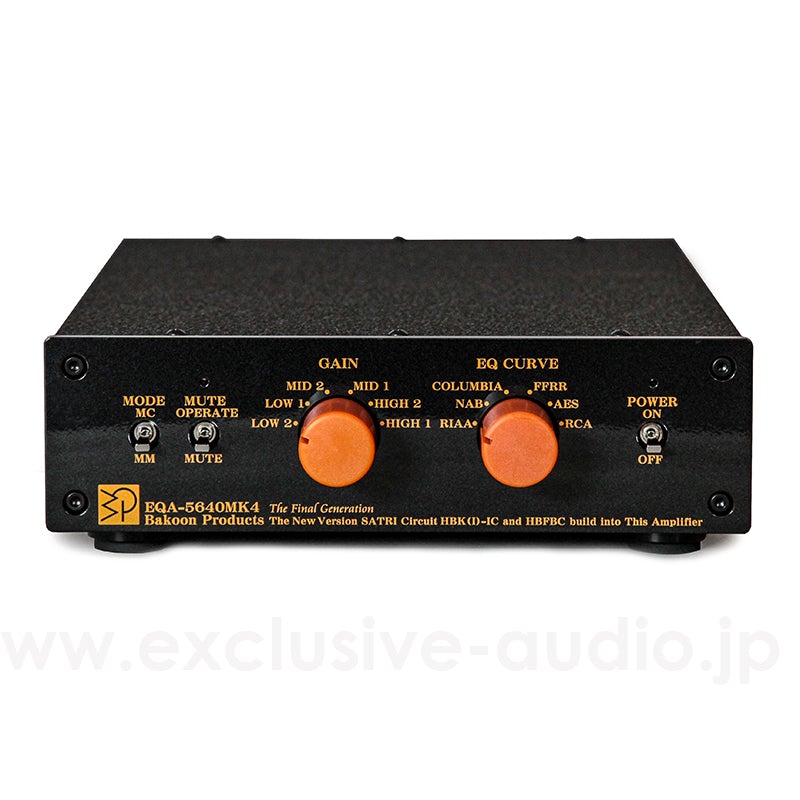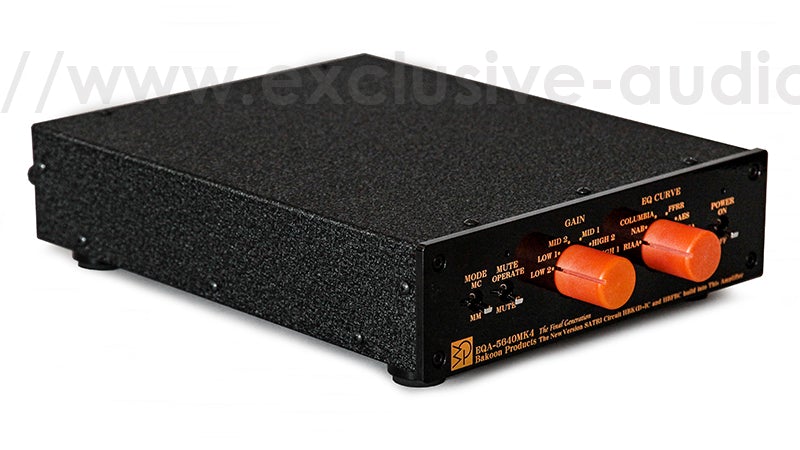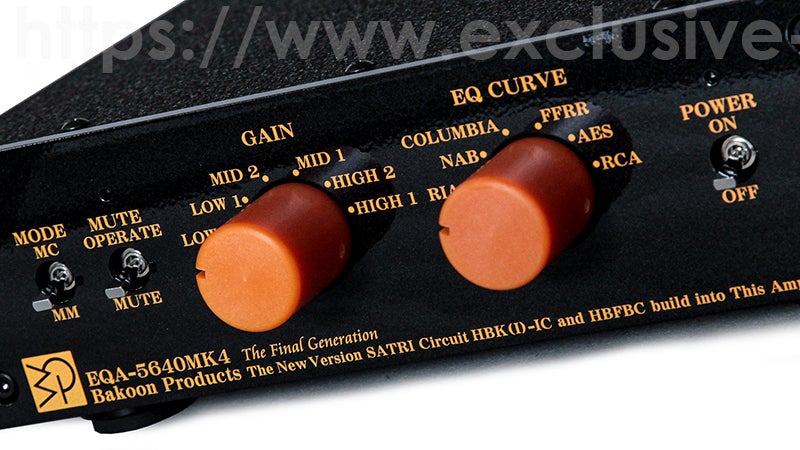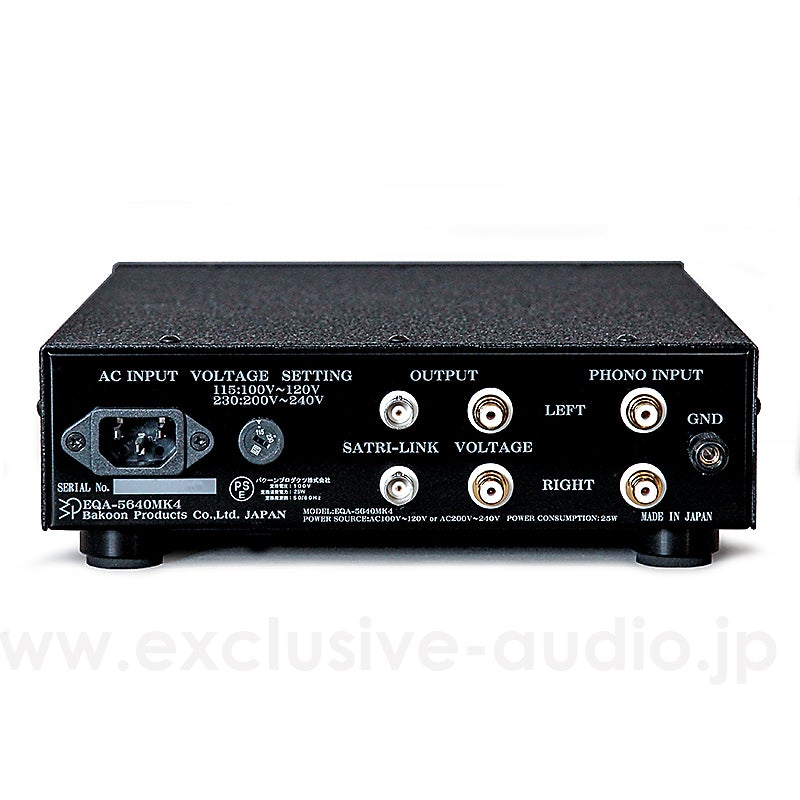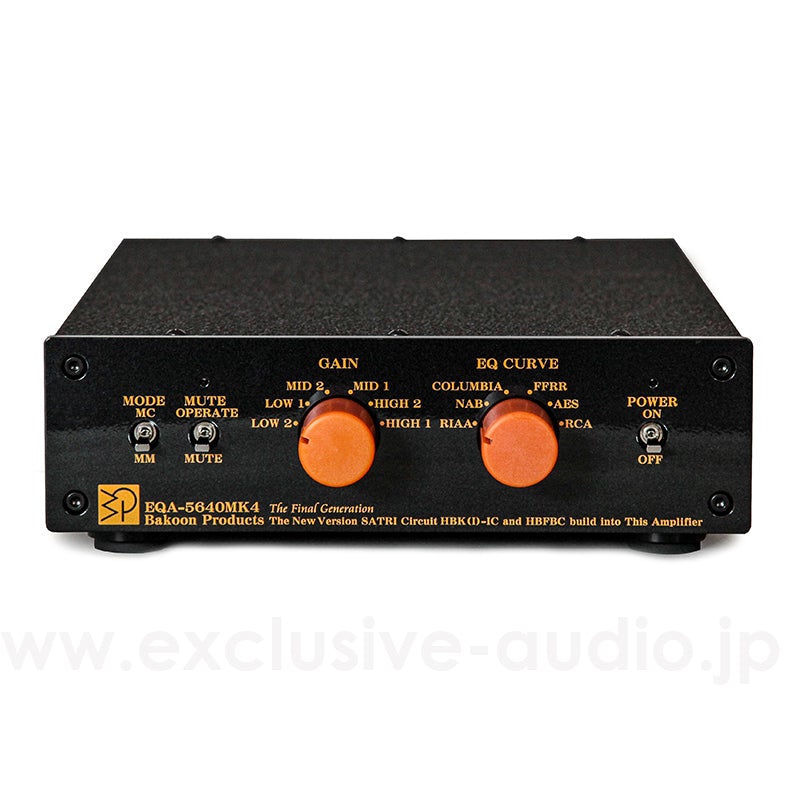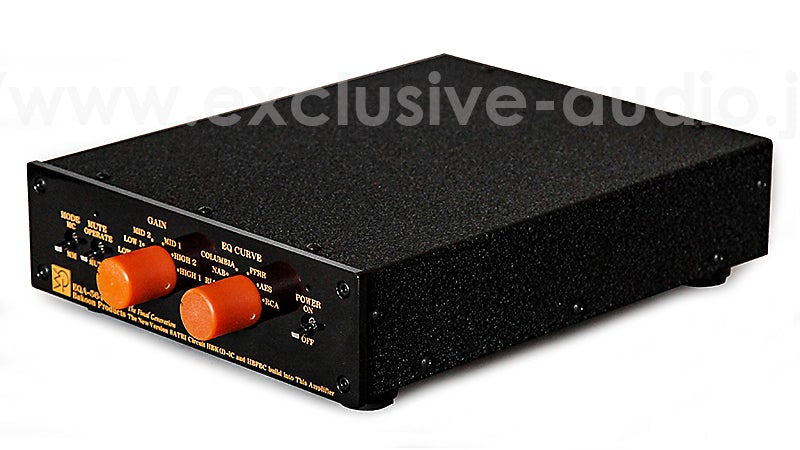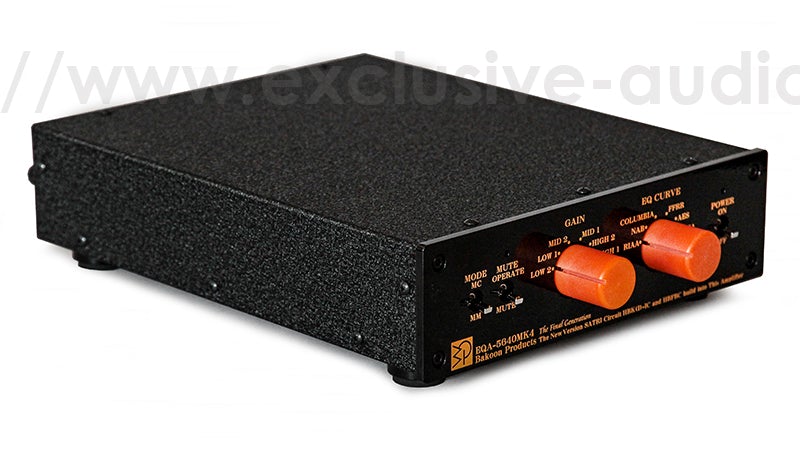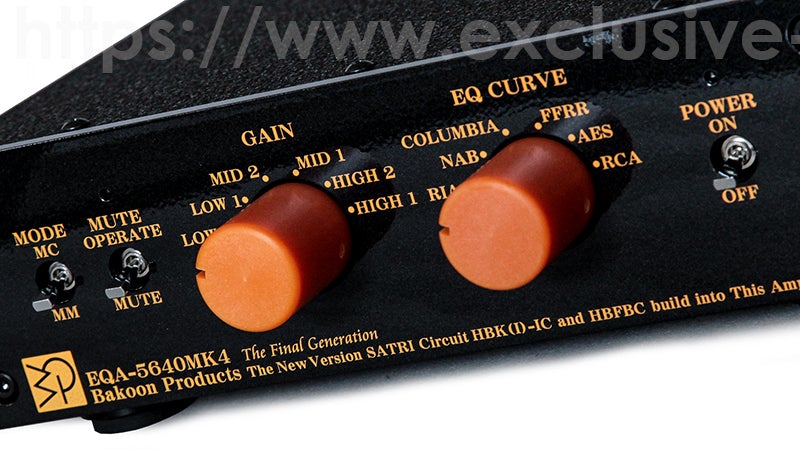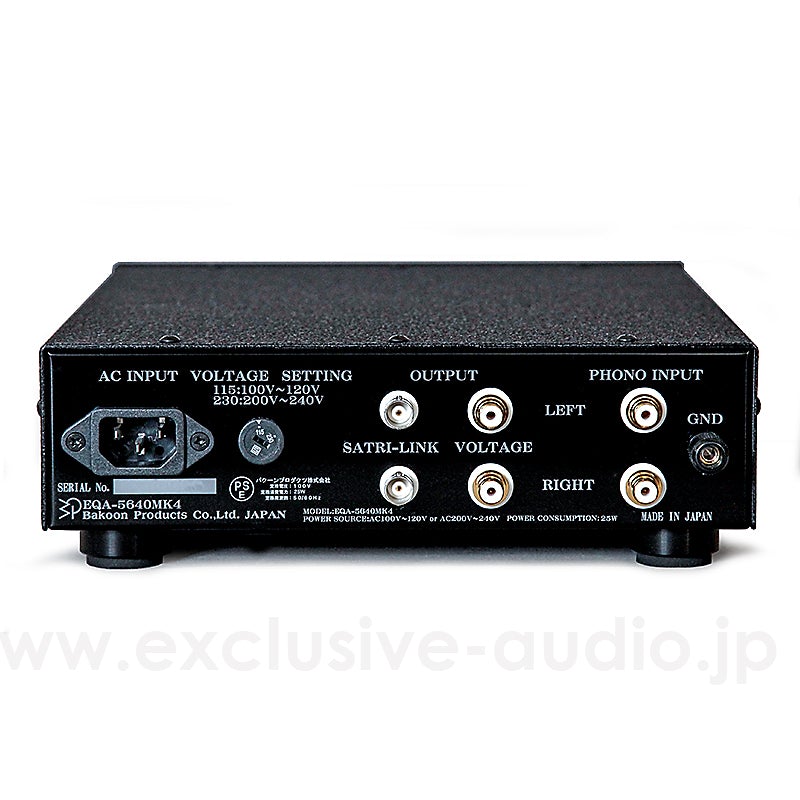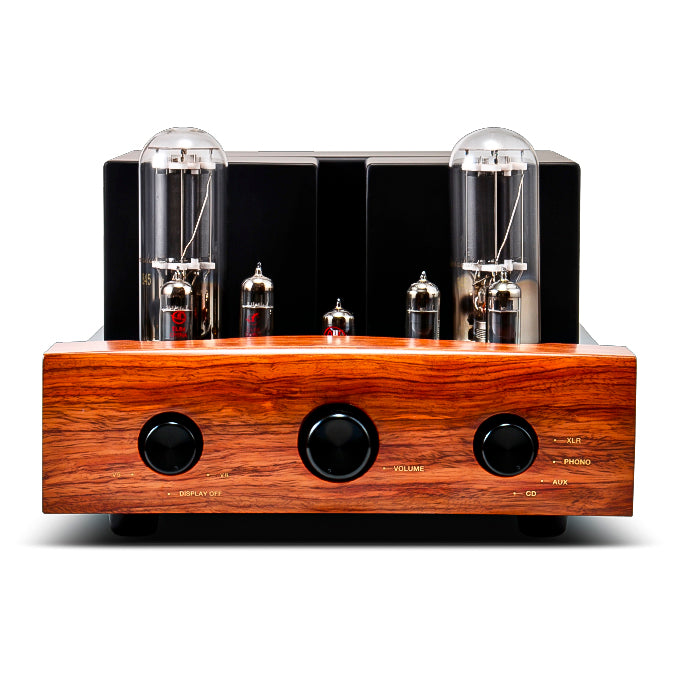This is a made-to-order product. Estimated shipping time is 3~7 business days.
Please note that the delivery date may be delayed depending on the manufacturer's order status.
Please note that the delivery date may be delayed depending on the manufacturer's order status.
Manipulate old records at will
Take control of old equalizer curves
Description

The EQA-5640mk4 is a phono equalizer amplifier that enables more accurate playback of vintage analog discs. Each record company had its own standards for master tape production, and each recording period and each record company had its own equalizer curve. Currently, the Recording Industry Association of America (RIAA) has standardized the equalizer curves. The EQA-5640mk4 is equipped with both the current standard RIAA and the typical old equalizer curves of NAB, COLUMBIA, FF, COLUMBIA, COLUMBIA, COLUMBIA, COLUMBIA, COLUMBIA, COLUMBIA, COLUMBIA, COLUMBIA, COLUMBIA, COLUMBIA, COLUMBIA, COLUMBIA, COLUMBIA, and COLUMBIA. The EQA-5640mk4 is an equalizer amplifier with six different curves: NAB, COLUMBIA, FFRR, AES, and OLD RCA. By using these six different equalizer curves, you can enjoy the original sound of your latest vinyl records as well as vintage discs from your collection.

When switching between the equalizer curves, the 1KHz gain is designed to fluctuate within 0.3dB even when the EQ is switched, which is useful when switching between curves to check for changes in sound. By setting it to mute, switching each selector, changing cartridges, and cleaning needle tips can reduce noise generation. Also, there is no loop noise when connecting to a power amplifier.

Low Noise, High Resolution
The EQA-5640MK4 has a new generation SATRI (Satori) circuit HBK(I)(Hibiki)-IC and HBFBC for good S/N ratio and reproduction with almost no noise and distortion.In addition to switching between MM and MC cartridges, the equalizer gain can be finely adjusted in 6 steps according to the cartridge output voltage to obtain the optimum position without clipping. Use HIGH1 for MC cartridges with very low output voltage, and LOW2 for high output MM cartridges with output voltage exceeding 10mV.

In addition, the output circuit is equipped with conventional voltage output and current output SATRI-LINK. Therefore, the output impedance is several tens of milliohms, and the output impedance is isolated from the company's preamplifier and power amplifiers to which it is connected, so that no inductive noise is picked up even if the cable is extended.

The power supply uses a high quality, large capacity toroidal transformer in a shielded case with analog power supply, and all components are surface-mounted to produce a direct sound with a thick midrange and no coloration. The size is the same as the SCA-7511mk4, a compact amplifier.
Spec
| Input |
1 system, switchable between MM and MC cartridges |
|---|---|
| Outputs | 1 voltage output, 1 SATRI-LINK output (can be used simultaneously) |
| EQ curve | RIAA, NAB, COLUMBIA, FFRR, AES, OLD RCA |
| Gain | HIGH1, HIGH2, MID1, MID2, LOW1, LOW2 |
| Frequency Response | 20Hz~50kHz |
| Maximum Output | 8V(1% distortion) |
| Distortion(1KHZ) | 4V: 0.06 |
| S/N Ratio | -135dB(HIGH1) |
| EQ error | ±0.3dB |
| Dimensions | 70mm(H) x 236mm(W) x 293mm(D) |

Review
Speaking of multi-curve phono equalizers, the CAP-1004 of the CAP series has recently been introduced, but the EQA-5640MK4 is a bit of a disappointment since the basic internal configuration of the MK3-era SATRI-IC has been changed to a newly developed circuit almost identical to the CAP1004 in order to support multi-EQ curves, which is a substantial downgrade. (Although I am not so much worried about the sound quality, since the sound of the Bakun in comparison is of a surprisingly high dimension to begin with). More importantly, if you are a person who mainly listens to records of pre-1960s vintage, being able to hear the original sound in accordance with the equalizer curve of the record will be far more advantageous than listening to the sound with the curve out of alignment. The analog power supply with toroidal transformer stabilizes the voltage and gives the impression of being thicker or richer, mainly in the midrange, than the CAP1004. The gain can be set to six levels, which is a form of response to recent high-output cartridges, and it is no surprise that the MUTE relay, which had a bad reputation in the MK3 because it broke down so easily, has been thoroughly addressed.The multi-curve function is not easy to use depending on the recordings made in the old days, since the equalizer curves varied depending on the record company and the recording period, and some recordings did not have a recording format listed. It is also interesting to note that although RIAA was supposed to have been standardized around 1953~54, DECCA continued to use FFRR in the 1960s, and even after other recording companies adopted RIAA, the equalizer curves they used before had a much better extension of sound. This would be a great item to explore old analog records in your collection.
